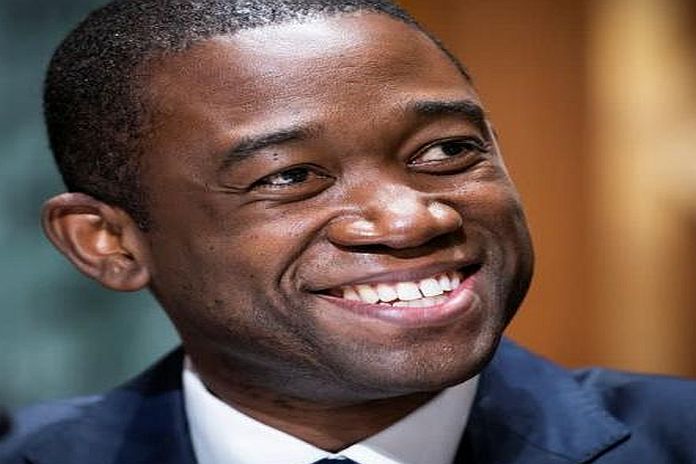
By Wally Adeyemo
As you all know, the theme of this year’s annual meeting is “making the case for optimism.” As we look to the new year, I am optimistic about the future of our economy because of the determination of the American people and a number of the things the president has done to invest in places that have been left out and left behind for too long.
Before I talk about where we are today and where we are going, it’s important to take a step back and think about where we were. In the first months of 2021, when I started at the treasury department, we couldn’t have been in the room together because a global pandemic prevented us from gathering. The American economy and the American people soon faced two crises.
First, the pandemic upended our communities. When the President took office, more than 3,000 Americans were dying from COVID each day. The unemployment rate jumped to nearly 15 percent. Students fell behind as schools shuttered their doors.
Second, while we were recovering from the pandemic, Russia started the largest land war in Europe since World War II, driving up gas and food prices around the world. The brave Ukrainian people have taken the brunt of Russia’s brutal war, but the Kremlin helped to drive up headline inflation and cause economic damage around the world.
But, the American people responded with innovation, resolve, and determination to both challenges. Scientists in the United States helped develop the first COVID vaccine and the president provided the resources and direction to execute the largest vaccination drive in our nation’s history and help schools safely reopen. This is why we were able to vaccinate over 200 million people, contributing to our economy recovering faster than China or Europe’s.
And as the president says, the Biden-Harris administration gave the American people a helping hand, not a handout. We provided small businesses with the resources to stay open and keep people employed. This is why we’ve not only maintained small businesses since the end of the pandemic, but we’ve actually seen Americans apply to start almost 15 million new businesses– more than any other time in history.
We gave parents a tax cut they could use to buy clothes, food, and other support for their children during this period. This is why childhood poverty for Black children dropped by more than 50 percent during the pandemic.
And we gave cities and states resources they invested in vaccination centers and helping people keep their homes. This is why any American that wants a shot can get a shot. It’s also why we continue to see eviction rates lower than before the pandemic.
Over the past two years, we experienced the most equitable economic recovery in American history. You can see this however you splice the data, but I want to focus today on the Black community.
The unemployment rate for Black Americans peaked at over 16 percent, but dropped to and has remained near record low levels.
Business ownership for Black families rose to its highest rate in history. From 2019 to 2022, Black Americans’ wages have risen faster than inflation, with real median wages up four percent.
During the same time, homeownership rates for Black families rose and we saw real median wealth increase by 60 percent.
This historic recovery was no accident. The president made the choice to provide tax cuts to parents, not millionaires; he decided to provide money to small businesses, not big corporations; and invest in underrepresented people in rural and urban communities. That’s why our economy is stronger than the biggest countries to our east and west.
But, as everyone in this room knows, we have more work to do. Inflation and prices have come down, with gas prices down nearly 40 percent from their peak, but we’ve got to do more. This is why the president is focused on doing things like reducing the cost of medicine for Americans and building more housing to reduce the cost of buying or renting a home.
As we focus on lowering costs for Americans, the Biden-Harris administration is also laser-focused on investing in America.
The Bipartisan Infrastructure Law, for example, directs critical resources toward rebuilding roads and bridges, replacing lead pipes, and installing high-speed internet, with funding concentrated in the states that need it most.
The Inflation Reduction Act is unleashing the American clean energy economy, creating good-paying manufacturing jobs and lowering the cost of utility bills over time. The IRA is also revitalizing communities that have been left behind, with over 80 percent of clean investment dollars since the IRA passed are in areas with below-average wages as well as in areas with below-average college graduation rates.
In Georgia, the impact is even more significant. Treasury’s recent analysis shows that 98 percent of clean investment dollars are landing in counties with below average weekly wages, and 86 percent of clean investment dollars are landing in counties with below-average college graduation rates. President Biden pledged to be a leader for all Americans. As we are seeing in communities from Bartow to Jefferson County, he is delivering on that promise.
And, on the back of the CHIPS and Science Act, manufacturing construction spending has doubled across the country.
I am optimistic about our ability to implement the programs and initiatives born from these laws, because I am confident in the American people and your ability to rise to the opportunity of investing in our country and creating opportunities for our children.










